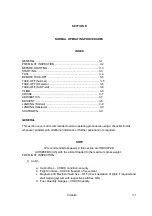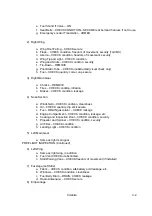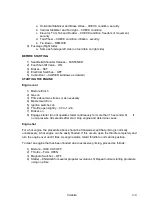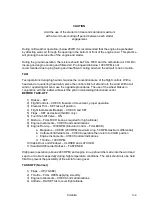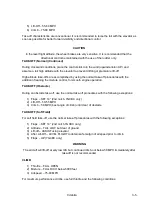
Citabria
3-5
5) Lift-Off
– 55-60 MPH
6) Climb
– 75-80 MPH
Take-off characteristics are conventional. It is recommended to raise the tail with the elevator as
soon as possible for better forward visibility and directional control.
CAUTION
In the level flight attitude, the wheel brakes are very sensitive. It is recommended that the
directional control be maintained with the use of the rudder only.
TAKE-OFF (Normal) (Continued)
During crosswind conditions, place the control stick into the wind (upwind aileron UP) and
assume a tail high attitude with the elevator to prevent drifting or premature lift-off.
High altitude take-
off’s are accomplished by using the normal take-off procedures with the
addition of leaning the mixture control, for smooth engine operation.
TAKE-OFF (Obstacle)
During an obstacle take-off, use the normal take-off procedures with the following exceptions:
1) Flaps
– SET 14° (2nd notch, 7GCBC only)
2) Lift-Off
– 50-55 MPH
3) Climb
– 58 MPH (best angle of climb) until clear of obstacle
TAKE-OFF (Soft Field)
For soft field take-off, use the normal take-off procedures with the following exceptions:
1) Flaps
– SET 14° (2nd notch 7GCBC only)
2) Attitude
– TAIL LOW but clear of ground
3) Lift-off
– ASSIST using elevator
4) After Lift-Off
– LEVEL FLIGHT to obtain safe margin of airspeed prior to climb
5) Flaps
– UP (7GCBC only)
WARNING
The aircraft will lift-off at very low lAS but continued climb-out below 58 MPH immediately after
take-off is not recommended.
CLIMB
1) Throttle
– FULL OPEN
2) Mixture
– FULL RICH below 5000 feet
3) Airspeed
– 75-80 MPH
For maximum performance climbs, use full throttle and the following conditions:
Summary of Contents for Citabria Explorer 7ECA
Page 1: ......
Page 32: ...Citabria 5 4...
Page 33: ...Citabria 5 5...
Page 34: ...Citabria 5 6...
Page 37: ...Citabria 6 3 FIGURE 6 1 AIRCRAFT SPECIFICATIONS...
Page 38: ...Citabria 6 4...











